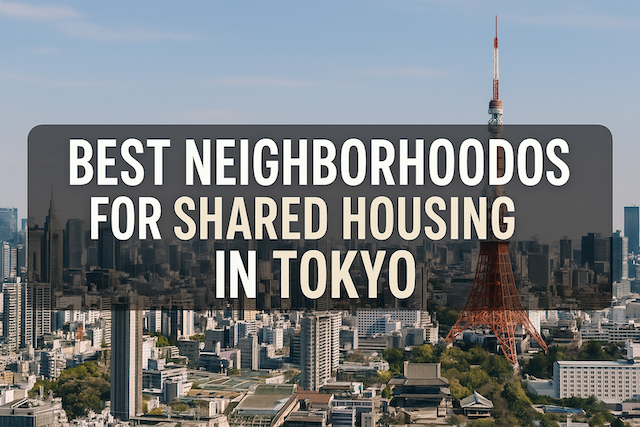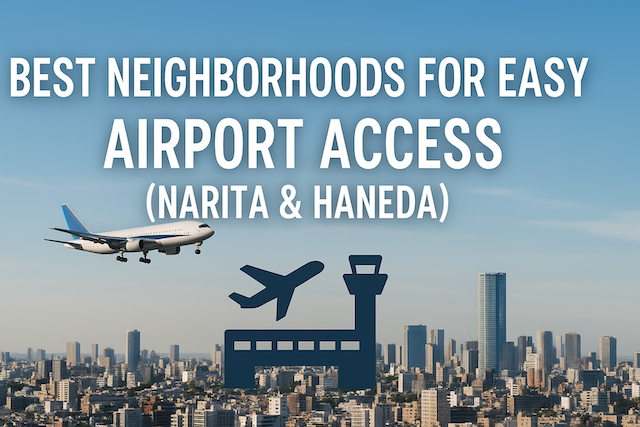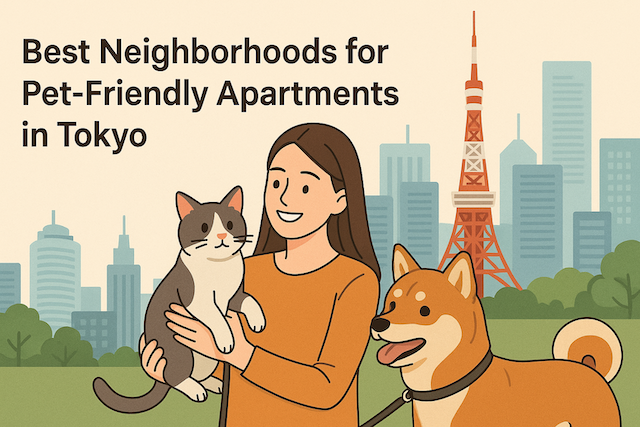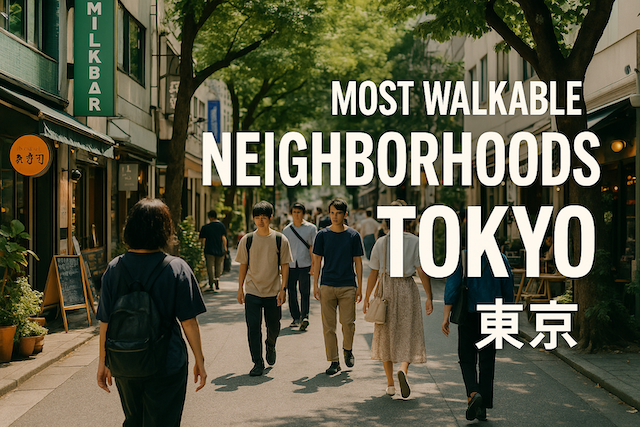Best Neighborhoods for Shared Housing in Tokyo
Shared housing has become one of the most popular living options in Tokyo, especially among students, digital nomads, and young professionals looking to balance affordability, community, and convenience. As rent prices in central Tokyo continue to rise, share houses—where tenants rent private rooms but share communal spaces like kitchens and living areas—offer an attractive alternative. In this article, we’ll explore the best neighborhoods for shared housing in Tokyo, considering factors like accessibility, lifestyle, cost, and community vibe.
What Makes Shared Housing Popular in Tokyo
Before diving into neighborhoods, it’s worth understanding why shared housing has become a major trend in Tokyo:
-
Affordability: Renting a room in a share house can cost 30–50% less than renting a studio apartment in the same area.
-
Community: Many share houses encourage social interaction and offer shared amenities like lounges, coworking areas, and even gyms.
-
Flexibility: Shorter contracts, minimal move-in costs, and fully furnished spaces make share houses ideal for newcomers to Japan.
-
Convenience: Utilities, Wi-Fi, and maintenance are typically included, making it easy for residents to move in and settle quickly.
With these benefits in mind, let’s look at the top neighborhoods where shared living thrives in Tokyo.
1. Shibuya – Central and Social
Shibuya is one of the most dynamic and youth-oriented areas in Tokyo. For those who crave energy, nightlife, and easy access to Tokyo’s cultural scene, Shibuya is a top choice.
Why Shibuya is Great for Shared Housing
-
Proximity to universities like Aoyama Gakuin and Kokugakuin attracts students.
-
Shared housing options range from small co-living spaces to large, modern complexes with communal kitchens and rooftop terraces.
-
Excellent transport connections via the JR Yamanote Line and Tokyo Metro make commuting to other parts of the city effortless.
Average Rent
-
Shared house rooms: ¥70,000–¥100,000 per month
-
Studio apartments: ¥120,000 and up
Ideal For
-
Students, young professionals, and creatives seeking social living in a central location.
2. Nakano – Friendly and Affordable
Nakano offers a perfect balance between convenience and affordability. It’s just a few stops from Shinjuku, yet it maintains a relaxed, local feel.
Why Nakano is Ideal
-
Lower rent prices compared to central Shibuya or Shinjuku.
-
Cultural and entertainment hub with Nakano Broadway and plenty of izakayas and cafes.
-
Strong community—many share houses here foster interaction among residents with events and shared dinners.
Average Rent
-
Shared house rooms: ¥55,000–¥85,000
-
Studio apartments: ¥90,000–¥110,000
Ideal For
-
Budget-conscious expats, students, and anime/manga enthusiasts.
3. Kichijoji – Nature Meets Culture
Kichijoji consistently ranks among the most desirable neighborhoods to live in Tokyo. Located in western Tokyo, it blends creative culture, trendy shopping, and beautiful parks.
Why Kichijoji is Great for Shared Living
-
Inokashira Park provides a peaceful retreat right in the neighborhood.
-
Artistic and young atmosphere attracts musicians, artists, and entrepreneurs.
-
Share houses with character, from cozy vintage homes to modern co-living spaces with gardens.
Average Rent
-
Shared house rooms: ¥60,000–¥90,000
-
Studio apartments: ¥100,000–¥130,000
Ideal For
-
Artists, freelancers, and nature lovers who still want easy access to central Tokyo.
4. Koenji – Bohemian and Lively
Koenji, often dubbed the “hipster capital” of Tokyo, is a favorite among musicians, creatives, and those who appreciate vintage fashion and alternative culture.
Why Koenji Works for Shared Housing
-
Vibrant local culture with live music venues and thrift stores.
-
Laid-back vibe encourages community-focused living.
-
Affordable shared houses in renovated older homes with quirky, artistic designs.
Average Rent
-
Shared house rooms: ¥50,000–¥80,000
-
Studio apartments: ¥85,000–¥100,000
Ideal For
-
Creatives, digital nomads, and anyone seeking a relaxed but social lifestyle.
5. Asakusa – Historic and Tourist-Friendly
Asakusa, known for its traditional charm and temples, is an up-and-coming area for share houses, especially among foreigners new to Japan.
Why Asakusa Is a Great Pick
-
Cultural richness: Living near Sensō-ji Temple gives a daily taste of old Tokyo.
-
Good access to Ueno, Akihabara, and Tokyo Station.
-
Reasonable prices for both short- and long-term stays.
Average Rent
-
Shared house rooms: ¥55,000–¥75,000
-
Studio apartments: ¥90,000–¥120,000
Ideal For
-
Short-term residents, students, and culture enthusiasts.
6. Meguro – Calm and Sophisticated
Meguro is a peaceful yet upscale neighborhood with a mix of greenery, good food, and modern apartment buildings. It’s perfect for those who want a mature, comfortable environment while still being central.
Why Meguro Is Popular
-
Excellent access to Shibuya, Shinagawa, and Ebisu.
-
Stylish co-living properties often managed by premium share house companies like Oakhouse or ShareStyle.
-
Quiet streets ideal for professionals who prefer a tranquil home base.
Average Rent
-
Shared house rooms: ¥70,000–¥100,000
-
Studio apartments: ¥130,000 and up
Ideal For
-
Working professionals and long-term residents seeking balance between convenience and peace.
7. Ikebukuro – Practical and Well-Connected
Ikebukuro, one of Tokyo’s main hubs, offers convenience and affordability with a wide selection of share houses. It’s also popular among international residents due to its accessibility and nearby schools.
Why Ikebukuro Works
-
Major transport hub with JR, Tokyo Metro, and private rail lines.
-
Plenty of restaurants, stores, and entertainment.
-
Affordable share houses catering to both students and workers.
Average Rent
-
Shared house rooms: ¥55,000–¥80,000
-
Studio apartments: ¥100,000–¥120,000
Ideal For
-
Students and first-time Tokyo residents who value accessibility.
8. Setagaya – Family-Friendly and Peaceful
Setagaya is known for its residential charm, parks, and high-quality living standards. While more laid-back, it’s also home to several share houses designed for long-term tenants.
Why Setagaya Is Appealing
-
Green neighborhoods like Sangenjaya and Shimokitazawa nearby.
-
Comfortable environment for those who prefer quiet yet connected living.
-
Premium share houses offering private bathrooms and coworking spaces.
Average Rent
-
Shared house rooms: ¥60,000–¥95,000
-
Studio apartments: ¥110,000–¥140,000
Ideal For
-
Professionals and couples looking for relaxed living with good access to the city.
9. Shimokitazawa – Trendy and Youthful
Shimokitazawa is the beating heart of Tokyo’s indie scene, filled with secondhand stores, live houses, and cozy cafes. It’s one of the most social areas for shared housing.
Why Shimokitazawa Stands Out
-
Unique lifestyle: perfect for artists and freelancers.
-
Compact yet vibrant community encourages connections among residents.
-
Modern shared houses with chic interiors and strong sense of belonging.
Average Rent
-
Shared house rooms: ¥65,000–¥95,000
-
Studio apartments: ¥110,000–¥130,000
Ideal For
-
Young professionals, artists, and those seeking a fun, walkable community.
10. Ota Ward – Affordable and Accessible to the Airport
Ota Ward (Ōta-ku) covers areas like Kamata and Omori, offering budget-friendly options and easy access to Haneda Airport.
Why Ota Ward Is Worth Considering
-
Great for frequent travelers and airline staff.
-
Affordable shared houses compared to central Tokyo.
-
Residential atmosphere with shopping streets and local eateries.
Average Rent
-
Shared house rooms: ¥45,000–¥70,000
-
Studio apartments: ¥85,000–¥100,000
Ideal For
-
Budget travelers, flight crew, and remote workers.
Tips for Choosing the Right Neighborhood
When picking a neighborhood for shared housing in Tokyo, consider the following:
-
Commute: Choose areas along your train line to minimize travel costs and time.
-
Lifestyle: Do you prefer lively nightlife (Shibuya) or calm living (Setagaya)?
-
Community: Some share houses emphasize social events, while others prioritize privacy.
-
Contract Terms: Many co-living spaces allow short stays (1–3 months), but check for hidden fees.
-
Facilities: Look for shared amenities like coworking spaces, laundry, and outdoor areas.
Final Thoughts
Tokyo’s shared housing scene offers something for everyone—from the social buzz of Shibuya and Shimokitazawa to the calm sophistication of Meguro or Setagaya. Whether you’re a student, expat, or professional, living in a share house is an excellent way to experience Tokyo’s diverse neighborhoods affordably and authentically.
By choosing the right area that aligns with your lifestyle and budget, you can make your Tokyo experience both comfortable and memorable.
ChatGPT said:
What is shared housing in Tokyo, and who is it best for?
Shared housing (share houses or co-living) offers private bedrooms with communal kitchens, lounges, and sometimes coworking areas. It suits students, interns, digital nomads, and young professionals who value affordability, flexibility, and built-in community. Many properties are furnished and include utilities, simplifying move-in and budgeting.
Which Tokyo neighborhoods are most popular for shared housing?
Shibuya, Nakano, Kichijoji, Koenji, Asakusa, Meguro, Ikebukuro, Setagaya, Shimokitazawa, and parts of Ota Ward are consistently popular. Each balances price, access, and lifestyle differently—Shibuya and Shimokitazawa for nightlife and creative scenes, Nakano and Koenji for budget-friendly local vibes, and Meguro or Setagaya for quieter, upscale comfort.
How much does a room in a Tokyo share house typically cost?
Expect roughly ¥45,000–¥100,000 per month depending on location, room size, and amenities. Central, trendy areas (e.g., Shibuya, Shimokitazawa) sit at the higher end, while residential zones (e.g., Ota Ward, parts of Nakano) trend lower. Prices usually include utilities, Wi-Fi, and basic maintenance.
How do commute times differ across these neighborhoods?
Shibuya, Meguro, and Ikebukuro minimize travel across the city thanks to major rail interchanges. Western hubs like Kichijoji and Nakano offer fast links to Shinjuku. Asakusa provides access to Ueno and Tokyo Station, while Ota Ward shines for Haneda connectivity; consider your daily line first to reduce transfers.
Are short-term stays possible in share houses?
Yes. Many operators accept 1–3 month contracts, ideal for interns or newcomers. Always confirm minimum stay, notice period, and move-out cleaning fees; flexible terms often carry slightly higher rates but reduce risk and commitment.
What amenities should I expect in quality co-living spaces?
Furnished rooms, high-speed internet, equipped kitchens, laundry machines, and regular cleaning of common areas are standard. Higher-end properties add coworking rooms, soundproof booths, gyms, terraces, or community events. Check for secure entry, parcel lockers, bike parking, and clear house rules.
How do neighborhood vibes differ for lifestyle fit?
Pick Shibuya or Shimokitazawa for nightlife, live music, and dense café culture. Choose Koenji or Nakano for indie shops, thrift finds, and friendly shoutengai streets. Opt for Meguro or Setagaya if you prefer calmer, leafy streets and a more residential rhythm; Kichijoji blends park-side nature with culture.
Is shared housing cheaper than a studio apartment?
Usually yes. Relative to studios in the same district, share houses can be 30–50% cheaper when you factor furniture, utilities, and Wi-Fi. Upfront costs (key money, deposits) also tend to be lighter, improving cash flow for first-time residents.
What should I check in the contract before signing?
Review the minimum stay, renewal rules, notice period, deposits, and penalty clauses. Confirm what utilities are included, guest policies, quiet hours, smoking rules, and cleaning schedules. Ensure the contract outlines dispute handling, repair response times, and how deposits are returned.
How important are house rules and community guidelines?
Critical. Clear norms for cleanliness, noise, shared item use, and guest access prevent friction. Ask how conflicts are resolved and whether there is on-site staff or a community manager. A well-run property will present rules up front and enforce them fairly.
Are mixed-gender and women-only share houses available?
Yes. Tokyo offers mixed-gender, women-only, and sometimes men-only floors or buildings. If privacy is a priority, look for private bathrooms or ensuite options, or choose properties with separate gendered facilities and secure access.
How can I balance budget with location?
Start with your main destination line (work or school), then search one or two stops outside major hubs to cut rent without sacrificing access. Nakano, Koenji, and Ota Ward often deliver strong value; Meguro or Setagaya cost more but offer quieter living and quality amenities.
What red flags should I watch for during viewings?
Vague or unenforced rules, poor ventilation, inadequate cleaning, and unclear fee breakdowns are warning signs. Test water pressure, check kitchen capacity versus resident count, and ask about noise insulation. If possible, talk to current residents about management responsiveness.
How do deposits and initial fees work?
Many share houses minimize or waive key money and reduce deposits compared to private rentals. You might still see an initial cleaning fee or bedding fee. Clarify all upfront costs, refund conditions, and any prorated charges if moving mid-month.
Can I work remotely comfortably from a share house?
Often yes, especially in properties with dedicated coworking rooms, phone booths, and reliable internet. Prioritize neighborhoods with good cafés (e.g., Shimokitazawa, Kichijoji) and verify Wi-Fi speeds, desk space, and quiet-hour policies before committing.
Are there cultural considerations for first-time residents in Japan?
Be mindful of quiet hours, trash sorting rules, and shared space etiquette. Remove shoes indoors, label your items, and clean as you go. Respecting common-area norms builds trust and helps you integrate smoothly into the community.
How do I choose between two great neighborhoods?
List your top three daily needs (e.g., commute, nightlife, parks), then score each area. Tour buildings at your regular hours to gauge noise and crowd levels. If tied, pick the location on your primary train line that offers the best property management and community fit.


![Where to Live in Tokyo for Singles [2025–2026 Guide]](https://tokyorelocationguide.com/wp-content/uploads/2025/10/ChatGPT-Image-Oct-17-2025-04_03_58-PM.png)




